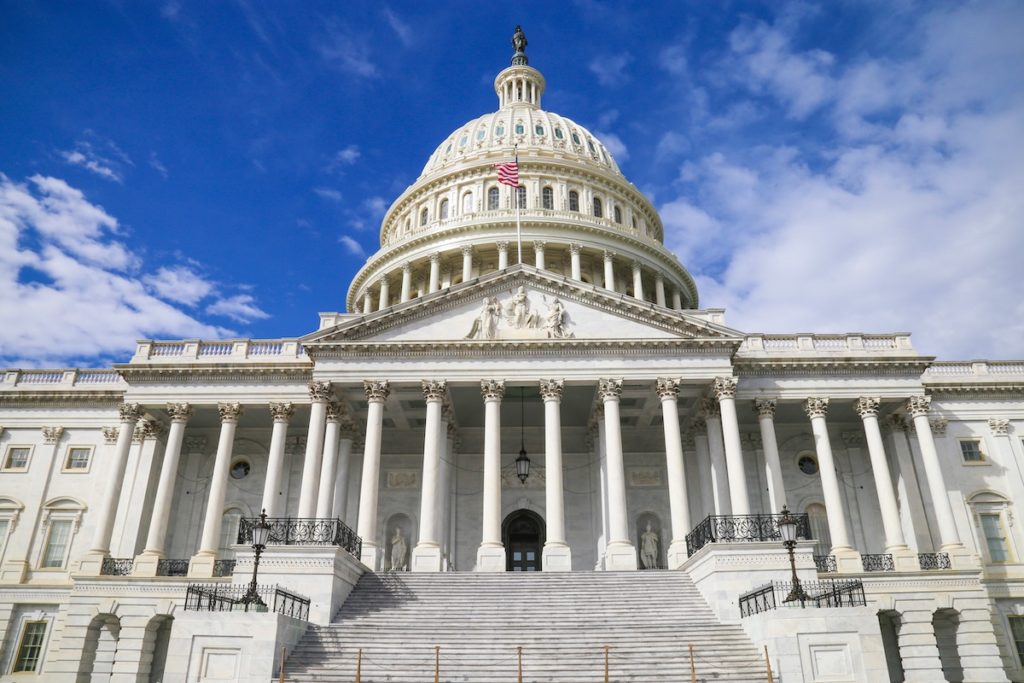Below we will discuss the current tax proposals that are being debated in Washington. Wade Financial Advisory will be evaluating the final enacted legislation to advise on its impact on our clients.
September saw the release of the Democrats’ full tax proposal, which details their plan to pay for expanding access to paid family leave, education, and healthcare, as well as efforts to combat climate change. The proposal is expected to provide more than $2 trillion in new revenue over the next ten years, mostly from high-income households and companies, and negotiations are currently underway.
Details of the Biden Tax Plan
Included in the tax proposal is nearly $1 trillion in tax increases on high-income households and an additional $1 trillion on U.S. corporations. It also includes measures for increased tax enforcement, which could generate $120 billion, alongside $700 billion from changes to drug-pricing policy. Democrats are operating under the assumption that this legislation would spur economic growth, too, perhaps generating as much as $600 billion in additional revenue.
The proposal provides details on how President Biden and congressional Democrats intend to pay for an agenda of new spending and tax cuts with a price tag of approximately $3.5 trillion. Below we will review the key items from the proposal, as released by the House Ways and Means Committee.
Increased Individual Taxes
As long expected based on the President’s past comments, the proposal includes a series of tax increases for high-income households. The basic top income tax rate is currently 37% and it would be increased to 39.6%. That top bracket would start at $400,000 for individuals and $450,000 for married couples. It is worth noting that these thresholds are actually lower than what the Biden administration has proposed.
The plan also impacts individuals and married couples with an adjusted gross income above $5 million, by proposing a 3-percentage-point surtax.
Capital Gains Increase
Unsurprisingly, the Democrats’ proposal also calls for an increase in the long-term capital gains and dividends rate, up 5% from the current rate of 20% to 25%. However, it does not include the Biden administration’s proposed structural changes, which would have also imposed taxes on unrealized gains at death, because it drew opposition from rural Democrats.
Under the proposal, the new top rate on capital gains could be as high as 31.8% when combined with the surtax and an existing 3.8% investment income tax.
Additional Changes of Note
The proposal would limit a few estate-planning techniques, including some specific uses of grantor trusts and asset transfers with discounted values. Further, increases in the estate tax exemption that are currently set to expire after 2025 would instead end on December 31 of this year.
There are also proposed changes for high-income individuals with tax-preferred retirement accounts totaling $10 million or more. These individuals would no longer be permitted to contribute to those accounts, and they would face higher mandatory distributions once the account balances reach that threshold. This provision would apply once an individual’s taxable income exceeds $400,000 or once a married couple’s income exceeds $450,000.
One provision in the plan would be retroactive to December 2016: the proposal would limit deductions for certain land-rights donations referred to as conservation easements.
The proposed legislation also provides new funding for the IRS totaling $79 billion, meant to modernize its information technology systems and to strengthen enforcement activities. Democrats have said stronger enforcement activities will target individuals earning more than $400,000.
Tax Breaks
The proposed legislation would delay a tax increase slated to begin next year that would negatively impact companies with significant research expenses. It would also reward local newspapers with a payroll tax credit for employing journalists.
Negotiation continues over the SALT – the State and Local Tax Deduction – which was capped at $10,000 in the 2017 tax law changes. Democrats from high-tax states, such as New York and New Jersey, are pushing for the limit to be repealed.
Last week, the House Ways and Means Committee also announced details of significant tax cuts in the proposal. These include various renewable energy tax breaks, as well as an extension of the expanded child tax credit through 2025.
Increased Business Taxes
The Democrats’ tax plan seeks to replace the flat corporate tax rate with a graduated rate structure. Though President Biden has proposed raising the corporate tax rate from 21% to 28%, the proposal offers a more modest increase to 26.5%. Smaller corporations would fall under tax brackets with lower rates. Businesses would face an 18% tax rate on income up to $400,000, then 21% on income up to $5 million. Any business income above that level would be taxed at the maximum rate of 26.5%.
Additionally, the Democrats’ proposal also seeks to pare back an existing tax break for companies that pay their taxes on the owners’ individual tax returns. This means that some companies, like partnerships and S corporations, would see caps on a deduction they’ve enjoyed since the 2017 tax law changes. In specific, the deduction would be limited to $500,000 for joint filers, $400,000 for individual filers, and $250,000 for a married individual filing a separate return. In line with the administration’s stated plans, the proposal also seeks to impose a tax of 3.8% on those entities – known as pass-through businesses. Under current law, a tax at that rate is applied to the wages of high-income individuals, but active business profits have remained exempt. The proposal also applies new limits on interest deductions for companies.
Changes to International Business Tax
The proposed plan would also mean higher taxes on foreign income. Though the administration sought an increase in the minimum tax from 10.5% to 21%, the Democrats’ plan finds a middle ground and seeks an increase to 16.6%. To offset the impact of the higher minimum tax, the proposal also allows companies to use more of their foreign tax credits.
Though the Biden administration had sought to eliminate it, companies can still exclude a percentage of their foreign tangible assets from the minimum tax. Current law allows the exclusion of an amount equal to 10%, but the proposal reduces it to 5% of foreign tangible assets.
Looking Forward
The committee is expected to vote on the tax proposals in the coming weeks. It’s important to remember that these recommendations may never become law in their proposed form. The Senate will likely have its own version of the reconciliation bill and the Biden administration has already begun to weigh in. The recommendations by the House Ways and Means Committee have simply laid the groundwork for possible tax reforms to be aware of as the legislative process moves forward.










